Pandemic Brings Public Health to Forefront
At the virtual roundtable on public health, held Tuesday, Dec. 15, via Zoom, the participants were Dr. James Kravec, chief medical officer, Mercy Health-Youngstown and medical director for the Mahoning County Board of Health; Dr. Michael Bigham, chief quality officer for Akron Children’s Hospital and pediatric intensivist of its intensive care unit; Dr. George Garrow, chief medical officer of Primary Health Network and board member of the Buhl Regional Health Foundation; Erin Bishop, commissioner of the Youngstown Board of Health; Ryan Tekac, commissioner of the Mahoning County Board of Health; Wes Vins, commissioner of the Columbiana County Board of Health; and Sarah Lowry, director of Healthy Community Partnership, Youngstown. Leading the discussion was Jeremy Lydic, content manager of The Business Journal. Dennis LaRue, copy editor, edited the transcript. Also participating was Jeff Leo Herrmann, CEO of the Youngstown Publishing Co., parent of The Business Journal. Photos were provided by the participants.
The Business Journal: Identify some of the health issues the coronavirus pandemic has either brought to light or exacerbated in the region.
Dr. James Kravec, chief medical officer, Mercy Health Youngstown and Mahoning County Board of Health medical director: What I’ve learned from this is the truly wonderful partnership between health systems and public health.
Dr. Michael Bigham, chief quality officer, Akron Children’s Hospital and a pediatric intensivist in its intensive care unit: Most of us are aware that uniquely for coronavirus, children have been spared compared to adults. But they’ve not been fully spared. We’re seeing some of them as some of our sickest patients in our ICUs.
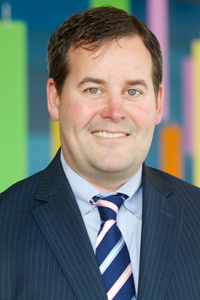
That said, what’s struck me around the care of children is, No. 1, most children have adults to look after them. So all of the things impacting the adults are directly impacting our children as well.
One of the most profound observations is the interdependence between public health and the school systems. Akron Children’s Hospital has a profound presence in so many of our school districts by providing school health services. It’s been impressive to see how nimble the public health community has been in support of the schools that have been leading up to those in desperate need of guidance.
The second observation is the bright light that has been shone on issues related to health disparity and the profound absence of health equity. This is something that’s been a priority of Akron Children’s Hospital long before the COVID pandemic. But there has been an effort to eliminate health disparities and achieve full health equity for our pediatric patient population.
We recognize that there’s not any single hospital or single practice working independently. It’s got to be built on partnerships with community nonprofits, partnerships with public health, partnerships with schools.
We are enthusiastic about the fact that there is a brighter light and a little more direction, more urgency provided toward solutions around health equity.
We’re excited to partner on work in those areas.
Erin Bishop, Youngstown City Health District commissioner: I want to talk about health disparities, especially here in the city of Youngstown. We have seen it in our minority population.
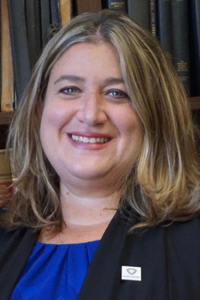
Just knowing people in our community and talking with them, we hear accounts about many people who have lost their lives. We saw just recently that our own former councilperson, Artis Gilliam, lost his life to COVID-19.
We are lucky to have [the city] office of minority health. We have been working with our patients and our residents to get into the neighborhoods. That’s why, when we started working on [COVID] testing, we went into all the communities. On each side of town, we tried to get there each week so that people who lived in those neighborhoods could come be tested as opposed to having to get in a car or get on the bus and get somewhere else.
That’s how we’ve been tackling that issue. We had been leaning on our local office. As we’re moving into the vaccinations, a lot of our population is nervous and concerned. We want to be able to tackle that issue.
Dr. George Garrow, chief medical officer, Primary Health Network and member of the board of the Buhl Regional Health System: One of the things that I have learned throughout this public health emergency is related to health disparity and a relative lack of trust in certain pockets in our community for health authorities, for public health officials, for government officials.
A big challenge that I’ve been trying to understand is how can we collectively as a community re-establish and gain trust, particularly of disaffected communities and groups. I think in order for us to succeed in the [pandemic] mitigation and for us to succeed in the vaccination campaigns related to COVID-19, it’s essential that we earn trust. I’m interested in the comments and expertise of the others on the panel about ways that we might be able to work together to re-engage trust in our community.
Wes Vins, Columbiana County Health District commissioner: The issues that have been exacerbated in our county are the attention to the rural community where people are generationally affected by poverty. Those issues surfaced because, as the pandemic evolved, we saw the economic disparities. So a lot of our folks wrestled with many issues related to the economic impact.
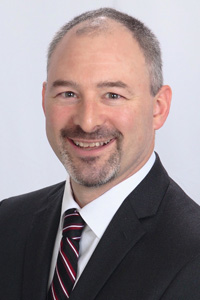
Initially, we saw a lot of that and then obviously the access to health care in a rural community. We have access points, but with barriers like transportation and [lack of] insurance coverage, it made it difficult for some in our rural community who live in poverty.
Then with our seniors, we had to deal with isolation. There’s an entire component of this under the health disparities. If we look at our seniors, isolation and the mental health impact on them – not just on the seniors themselves but because of the culture – they sometimes have multigenerational homes or multigenerational families who rely on one another to get through emergencies and crises like these.
The impact on those seniors, the mental health impact, translates into other impacts on the rest of their families. That resulted in a lot of stress in the home, both economically and emotionally.
Ryan Tekac, Mahoning County Board of Health commissioner: I want to build a little bit on what Dr. Kravec and Dr. Bigham said. It’s the importance of making sure that relationships are built within the community. We knew when this pandemic started there was going to be a heavy lift from public health. We knew that with our health systems and with how we’re set up from previous emergency response preparedness – the relationships that we’ve built over the years. Since 2002, public health has been practicing preparedness activities to address issues such as when a pandemic hits.
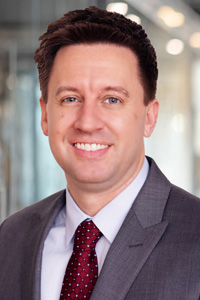
Having those relationships, at least in Mahoning County, [includes] a relationship with our EMA [Emergency Management Agency] director, with the Youngstown City Health District, with our other health partners. There were many times that we as a health department have been on the phone with either Columbiana, Trumbull County, Youngstown city, and other health departments. Almost everybody came to our side – our county commissioners, fire and police. Everybody wanted to help.
Going back to our school systems, this was something new for the schools and for them to take direction and build relationships with public health. That proved that schools were starting to get back in place, that they wanted to listen to public health, to build a relationship and ensure that our kids were going back. Not only to ensure safe instruction, but to ensure that, if there was a case [of COVID-19], that it wasn’t going to be brought back into the family homes
Sarah Lowry, director of Healthy Community Partnership: For those of you who may be hearing about us for the first time, we’re supported through the Community Foundation [of the Mahoning Valley], specifically their health-focused funds. The purpose of the Healthy Community Partnership is to pull together partners and stakeholders from all sorts of different sectors and backgrounds for a shared mission to improve health and health equity and well-being in the Mahoning Valley. We focus on Mahoning and Trumbull counties.

Very early on in the pandemic, we saw [problems] come to light that we have known – certainly health disparities. Also understanding that we need to bolster and recognize those social and environmental factors that impact health, such as access to food.
With the pandemic and so many indoor spaces in March and April having been shut down, more people went outside. There have been national and local conversations about the need for investment to build infrastructure to make sure that folks have welcoming outdoor spaces near them so they can be physically active.
Mental health is another significant concern. We’ve tried to use our biggest asset of the partnership, our network and our relationships, to help to support our individual partners in their efforts.
We’ve also seen new partnerships built to address issues like food access. Specifically, we’re making sure that seniors either have food delivered to them or have the tools to get connected to organizations doing that kind of work.
We also want to use this as an opportunity to not only think about the immediate needs to support the rapid response efforts but how can we think longer term. There have been some opportunities to think about policy change that came out of this. How can we, for example, take advantage of the pilot program in Ohio to allow SNAP [food stamp] recipients to use their benefits to order groceries online?
A small number of retailers allow this. How can we make that more permanent so that more individuals, more frequently and in the longer term are able to use those benefits to make sure that food access is not something that folks continue to have to work through? We know that was an issue in the Mahoning Valley before the pandemic and certainly in the pandemic and COVID-19 has, as many said, shone a light on some of those disparities and issues.
We’ve been trying to pull together our resources, support our partners, and address those social determinants of health and make the case for some longer-term changes.
The Business Journal: You bring up a very important point, the social determinants of population health. Regarding social determinants, public health infrastructure, accessibility, these are common concerns that everyone said are being recognized.
What is the public health community doing or what does the public health community need to do to address the issues you raised?
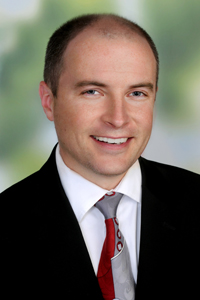
Kravec, Mercy Health-Youngstown chief medical officer; medical director, Mahoning County Health Department: As we think about public health, we think about the social determinants of health and about population health. All related but yet all separate. So tightly tied together and truly the social determinants of health tie all these pieces together.
From a medical group standpoint, from a hospital system standpoint, population health is the new buzzword from 2015 on. It’s going to be the reality that’s set in of how we’re handling patients moving forward.
Essentially, population health is how we take care of the community – meaning overall better care of diabetes, high blood pressure, pneumonia vaccines, colonoscopy and mammograms, those types of things. That’s population health.
It’s easy to say everyone needs to have a colonoscopy. Everyone needs to have a mammogram.
But the social determinants of health: what education is needed for that? Where is the access to transportation to get there? What is the access to getting a test done because of cost? Is telehealth available when someone doesn’t have a transport?
All those pieces are part of the social determinants of health. That is one of the most important public health issues right now.
We talk about racism as a public health emergency. That does cause people to not get tests. The cost of the payments does not allow people to get tests done. That does affect the health of the community. It affects the population’s health, and that’s probably one of the most important issues that health systems and health departments need to focus on.
Bigham, chief quality officer, Akron Children’s Hospital: I can’t agree more with what Dr. Kravec said. We talk a lot about providing excellent care for the patients in our primary care practices or in our hospitals. True health – and again, [Akron Children’s] lens is really around child health – is continued health regardless of where the children are in their communities, in their schools, or whether they’re in front of us.
We know that much more of a child’s health is influenced by things outside of the walls of Akron Children’s Hospital than inside. To reinforce what is critical to advancing children’s health or all health, there are many instances where patients are in front of us but we still can’t influence their overall health because of social determinants. We’re doing screening and detection of some of those social determinants of health.
To the extent that the public health system can do the same, it feels important to merge or meld those barriers as we detect and learn of them. Similarly, we work in tandem to mitigate those social determinants of health through those barriers to overall health.
Because if Akron Children’s detects some of these social determinants of health, we’re working hard to get people plugged into community resources. But we’re not seeing all of those patients in front of us at all times.
There’s got to be complementary mechanisms to improve the detection of some of those barriers.
Vins, Columbiana County Health District commissioner: One of the biggest tools we can use to overcome some of those barriers – telehealth and communicating some of the universal messaging to address chronic diseases – is access to the internet.
We like to think that most people have access to internet. But we have a large part of the population in Columbiana County who don’t have access to the internet or to communicate the message or to telehealth, which then makes worse those issues of transportation and child care and economic barriers.
With access to the internet, we can not just improve the health side but we could also then impact education as we start to deal with some of these remote learning options.
Look for Part II of our Public Health Roundtable in Tuesday morning’s update, or read it in full in our January 2021 print edition. Click HERE to subscribe!
Copyright 2024 The Business Journal, Youngstown, Ohio.



